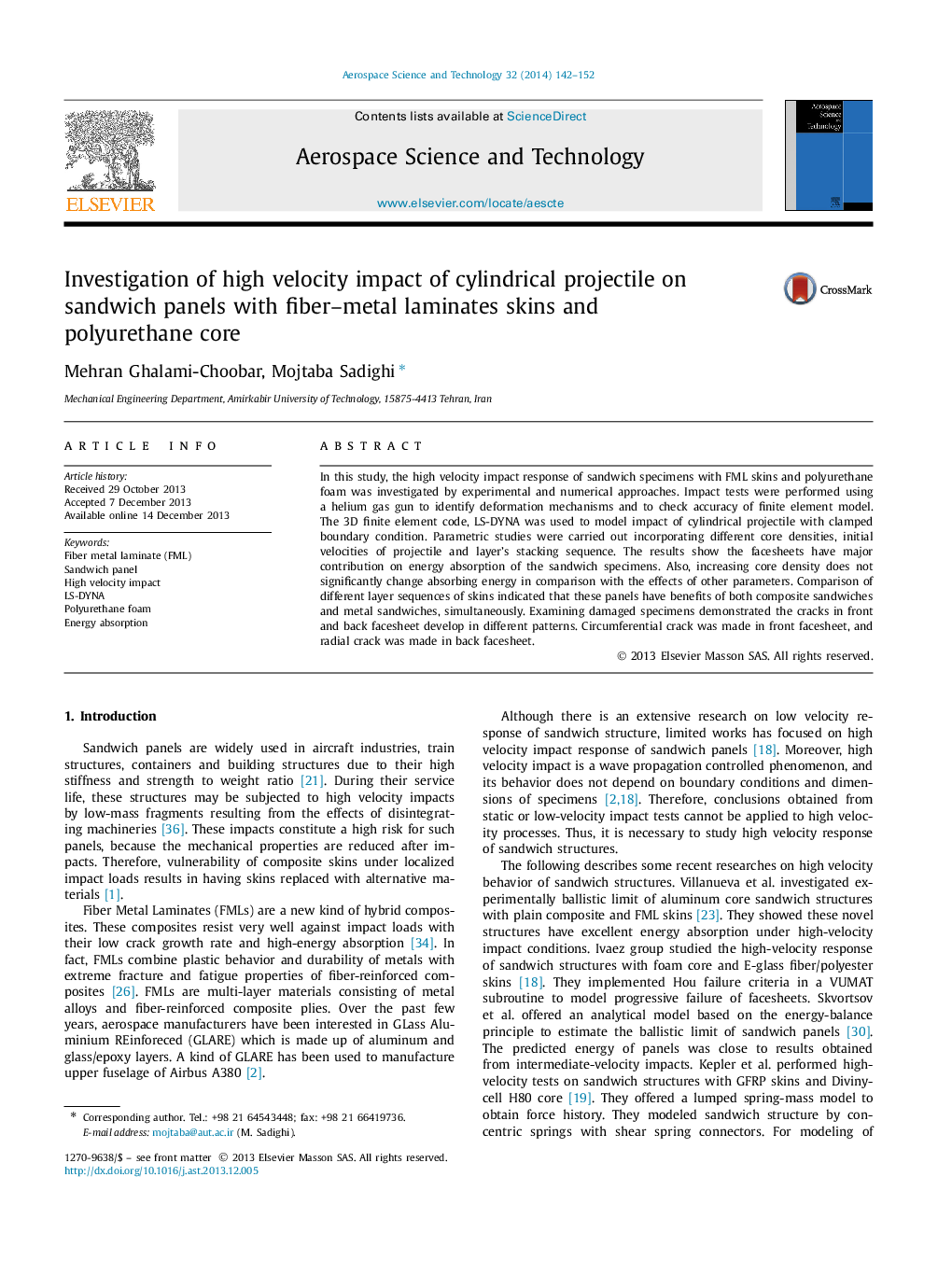| Article ID | Journal | Published Year | Pages | File Type |
|---|---|---|---|---|
| 1718103 | Aerospace Science and Technology | 2014 | 11 Pages |
In this study, the high velocity impact response of sandwich specimens with FML skins and polyurethane foam was investigated by experimental and numerical approaches. Impact tests were performed using a helium gas gun to identify deformation mechanisms and to check accuracy of finite element model. The 3D finite element code, LS-DYNA was used to model impact of cylindrical projectile with clamped boundary condition. Parametric studies were carried out incorporating different core densities, initial velocities of projectile and layerʼs stacking sequence. The results show the facesheets have major contribution on energy absorption of the sandwich specimens. Also, increasing core density does not significantly change absorbing energy in comparison with the effects of other parameters. Comparison of different layer sequences of skins indicated that these panels have benefits of both composite sandwiches and metal sandwiches, simultaneously. Examining damaged specimens demonstrated the cracks in front and back facesheet develop in different patterns. Circumferential crack was made in front facesheet, and radial crack was made in back facesheet.
